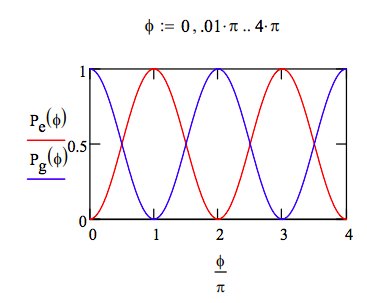7.23: The Ramsey Atomic Interferometer
- Page ID
- 141692
\( \newcommand{\vecs}[1]{\overset { \scriptstyle \rightharpoonup} {\mathbf{#1}} } \)
\( \newcommand{\vecd}[1]{\overset{-\!-\!\rightharpoonup}{\vphantom{a}\smash {#1}}} \)
\( \newcommand{\id}{\mathrm{id}}\) \( \newcommand{\Span}{\mathrm{span}}\)
( \newcommand{\kernel}{\mathrm{null}\,}\) \( \newcommand{\range}{\mathrm{range}\,}\)
\( \newcommand{\RealPart}{\mathrm{Re}}\) \( \newcommand{\ImaginaryPart}{\mathrm{Im}}\)
\( \newcommand{\Argument}{\mathrm{Arg}}\) \( \newcommand{\norm}[1]{\| #1 \|}\)
\( \newcommand{\inner}[2]{\langle #1, #2 \rangle}\)
\( \newcommand{\Span}{\mathrm{span}}\)
\( \newcommand{\id}{\mathrm{id}}\)
\( \newcommand{\Span}{\mathrm{span}}\)
\( \newcommand{\kernel}{\mathrm{null}\,}\)
\( \newcommand{\range}{\mathrm{range}\,}\)
\( \newcommand{\RealPart}{\mathrm{Re}}\)
\( \newcommand{\ImaginaryPart}{\mathrm{Im}}\)
\( \newcommand{\Argument}{\mathrm{Arg}}\)
\( \newcommand{\norm}[1]{\| #1 \|}\)
\( \newcommand{\inner}[2]{\langle #1, #2 \rangle}\)
\( \newcommand{\Span}{\mathrm{span}}\) \( \newcommand{\AA}{\unicode[.8,0]{x212B}}\)
\( \newcommand{\vectorA}[1]{\vec{#1}} % arrow\)
\( \newcommand{\vectorAt}[1]{\vec{\text{#1}}} % arrow\)
\( \newcommand{\vectorB}[1]{\overset { \scriptstyle \rightharpoonup} {\mathbf{#1}} } \)
\( \newcommand{\vectorC}[1]{\textbf{#1}} \)
\( \newcommand{\vectorD}[1]{\overrightarrow{#1}} \)
\( \newcommand{\vectorDt}[1]{\overrightarrow{\text{#1}}} \)
\( \newcommand{\vectE}[1]{\overset{-\!-\!\rightharpoonup}{\vphantom{a}\smash{\mathbf {#1}}}} \)
\( \newcommand{\vecs}[1]{\overset { \scriptstyle \rightharpoonup} {\mathbf{#1}} } \)
\( \newcommand{\vecd}[1]{\overset{-\!-\!\rightharpoonup}{\vphantom{a}\smash {#1}}} \)
\(\newcommand{\avec}{\mathbf a}\) \(\newcommand{\bvec}{\mathbf b}\) \(\newcommand{\cvec}{\mathbf c}\) \(\newcommand{\dvec}{\mathbf d}\) \(\newcommand{\dtil}{\widetilde{\mathbf d}}\) \(\newcommand{\evec}{\mathbf e}\) \(\newcommand{\fvec}{\mathbf f}\) \(\newcommand{\nvec}{\mathbf n}\) \(\newcommand{\pvec}{\mathbf p}\) \(\newcommand{\qvec}{\mathbf q}\) \(\newcommand{\svec}{\mathbf s}\) \(\newcommand{\tvec}{\mathbf t}\) \(\newcommand{\uvec}{\mathbf u}\) \(\newcommand{\vvec}{\mathbf v}\) \(\newcommand{\wvec}{\mathbf w}\) \(\newcommand{\xvec}{\mathbf x}\) \(\newcommand{\yvec}{\mathbf y}\) \(\newcommand{\zvec}{\mathbf z}\) \(\newcommand{\rvec}{\mathbf r}\) \(\newcommand{\mvec}{\mathbf m}\) \(\newcommand{\zerovec}{\mathbf 0}\) \(\newcommand{\onevec}{\mathbf 1}\) \(\newcommand{\real}{\mathbb R}\) \(\newcommand{\twovec}[2]{\left[\begin{array}{r}#1 \\ #2 \end{array}\right]}\) \(\newcommand{\ctwovec}[2]{\left[\begin{array}{c}#1 \\ #2 \end{array}\right]}\) \(\newcommand{\threevec}[3]{\left[\begin{array}{r}#1 \\ #2 \\ #3 \end{array}\right]}\) \(\newcommand{\cthreevec}[3]{\left[\begin{array}{c}#1 \\ #2 \\ #3 \end{array}\right]}\) \(\newcommand{\fourvec}[4]{\left[\begin{array}{r}#1 \\ #2 \\ #3 \\ #4 \end{array}\right]}\) \(\newcommand{\cfourvec}[4]{\left[\begin{array}{c}#1 \\ #2 \\ #3 \\ #4 \end{array}\right]}\) \(\newcommand{\fivevec}[5]{\left[\begin{array}{r}#1 \\ #2 \\ #3 \\ #4 \\ #5 \\ \end{array}\right]}\) \(\newcommand{\cfivevec}[5]{\left[\begin{array}{c}#1 \\ #2 \\ #3 \\ #4 \\ #5 \\ \end{array}\right]}\) \(\newcommand{\mattwo}[4]{\left[\begin{array}{rr}#1 \amp #2 \\ #3 \amp #4 \\ \end{array}\right]}\) \(\newcommand{\laspan}[1]{\text{Span}\{#1\}}\) \(\newcommand{\bcal}{\cal B}\) \(\newcommand{\ccal}{\cal C}\) \(\newcommand{\scal}{\cal S}\) \(\newcommand{\wcal}{\cal W}\) \(\newcommand{\ecal}{\cal E}\) \(\newcommand{\coords}[2]{\left\{#1\right\}_{#2}}\) \(\newcommand{\gray}[1]{\color{gray}{#1}}\) \(\newcommand{\lgray}[1]{\color{lightgray}{#1}}\) \(\newcommand{\rank}{\operatorname{rank}}\) \(\newcommand{\row}{\text{Row}}\) \(\newcommand{\col}{\text{Col}}\) \(\renewcommand{\row}{\text{Row}}\) \(\newcommand{\nul}{\text{Nul}}\) \(\newcommand{\var}{\text{Var}}\) \(\newcommand{\corr}{\text{corr}}\) \(\newcommand{\len}[1]{\left|#1\right|}\) \(\newcommand{\bbar}{\overline{\bvec}}\) \(\newcommand{\bhat}{\widehat{\bvec}}\) \(\newcommand{\bperp}{\bvec^\perp}\) \(\newcommand{\xhat}{\widehat{\xvec}}\) \(\newcommand{\vhat}{\widehat{\vvec}}\) \(\newcommand{\uhat}{\widehat{\uvec}}\) \(\newcommand{\what}{\widehat{\wvec}}\) \(\newcommand{\Sighat}{\widehat{\Sigma}}\) \(\newcommand{\lt}{<}\) \(\newcommand{\gt}{>}\) \(\newcommand{\amp}{&}\) \(\definecolor{fillinmathshade}{gray}{0.9}\)The Ramsey interferometer, which closely resembles the Mach-Zehnder interferometer, is constructed using two π/2 Rabi pulses (R1 and R2) separated by a phase shifter in the lower arm, as shown below.

where
\[ |e \rangle = \begin{pmatrix} 1 \\ 0 \end{pmatrix} \nonumber \]
\[ |g \rangle = \begin{pmatrix} 0 \\ 1 \end{pmatrix} \nonumber \]
The matrix representations of the phase shifter and the Rabi elements are as follows:
\[ PhaseShift ( \phi) = \begin{pmatrix} 1 & 0 \\ 0 & e^{i \phi} \end{pmatrix} \nonumber \]
\[ Rabi( \phi) = \begin{pmatrix} \cos \left( \frac{ \theta}{2} \right) & - \sin \left( \frac{ \theta}{2} \right) \\ \sin \left( \frac{ \theta}{2} \right) & \cos \left( \frac{ \theta}{2} \right) \end{pmatrix} \nonumber \]
\[ Rabi \left( \frac{ \pi}{2} \right) = \begin{pmatrix} 0.707 & -0.707 \\ 0.707 & 0.707 \end{pmatrix} \nonumber \]
The input to the interferometer is the upper state |e> of a two-state atom. The first pulse behaves like a Hadamard gate creating a coherent superposition of |e> and the lower state of the atom, |g>.
\[ Rabi \left( \frac{ \pi}{2} \right) \begin{pmatrix} 1 \\ 0 \end{pmatrix} \rightarrow \begin{pmatrix} \frac{1}{2} 2^{ \frac{1}{2}} \\ \frac{1}{2} 2^{ \frac{1}{2}} \end{pmatrix} \nonumber \]
\[ \frac{1}{ \sqrt{2}} \begin{pmatrix} 1 \\ 1 \end{pmatrix} \nonumber \]
The phase shifter alters the superposition by adding a phase to |g>.
\[ PhaseShift( \phi ) Rabi \left( \frac{ \pi}{2} \right) \begin{pmatrix} 1 \\ 0 \end{pmatrix} \rightarrow \begin{pmatrix} \frac{1}{2} 2^{ \frac{1}{2}} \\ \frac{1}{2} e^{i \phi} 2^{ \frac{1}{2}} \end{pmatrix} \nonumber \]
\[ \frac{1}{ \sqrt{2}} \begin{pmatrix} 1 \\ e^{i \phi} \end{pmatrix} \nonumber \]
In the absence of a phase shift (ϕ = 0) the two π/2 pulses behave like a not gate yielding |g> at the output channel.
\[ Rabi \left( \frac{ \pi}{2} \right) PhaseShift(0) Rabi \left( \frac{ \pi}{2} \right) \begin{pmatrix} 1 \\ 0 \end{pmatrix} \rightarrow \begin{pmatrix} 0 \\ 1 \end{pmatrix} \nonumber \]
However if ϕ = π, the interferometer is equivalent to the identity operator and the output is |e>.
\[ Rabi \left( \frac{ \pi}{2} \right) PhaseShift( \pi) Rabi \left( \frac{ \pi}{2} \right) \begin{pmatrix} 1 \\ 0 \end{pmatrix} \rightarrow \begin{pmatrix} 1 \\ 0 \end{pmatrix} \nonumber \]
In general, the result is a superposition of |e> and |g>.
\[ Rabi \left( \frac{ \pi}{2} \right) PhaseShift ( \phi) Rabi \frac{ \phi}{2} \begin{pmatrix} 1 \\ 0 \end{pmatrix} \rightarrow \begin{pmatrix} \frac{1}{2} - \frac{1}{2} e^{i \phi} \\ \frac{1}{2} +\frac{1}{2} e^{i \phi} \end{pmatrix} \nonumber \]
\[ \begin{pmatrix} e \\ g \end{pmatrix} = \frac{1}{2} \begin{pmatrix} 1 - e^{i \phi} \\ 1 + e^{i \phi} \end{pmatrix} \nonumber \]
The probabilities of detecting |e> and |g> at the output channel depend on the phase ϕ, exhibiting interference effects as in the Mach-Zehnder interferometer with a phase shifter in the lower arm. This is shown below both algebraically and graphically.
\[ P_e ( \phi) = \left[ \left| \begin{pmatrix} 1 \\ 0 \end{pmatrix}^T Rabi \left( \frac{ \pi}{2} \right) PhaseShift ( \phi) Rabi \left( \frac{ \pi}{2} \right) \begin{pmatrix} 1 \\ 0 \end{pmatrix} \right| \right]^2 ~ simplify \rightarrow \frac{1}{2} - \frac{1}{2} \cos \phi \nonumber \]
\[ P_g ( \phi) = \left[ \left| \begin{pmatrix} 0 \\ 1 \end{pmatrix}^T Rabi \left( \frac{ \pi}{2} \right) PhaseShift ( \phi) Rabi \left( \frac{ \pi}{2} \right) \begin{pmatrix} 1 \\ 0 \end{pmatrix} \right| \right]^2 ~ simplify \rightarrow \frac{1}{2} + \frac{1}{2} \cos \phi \nonumber \]


